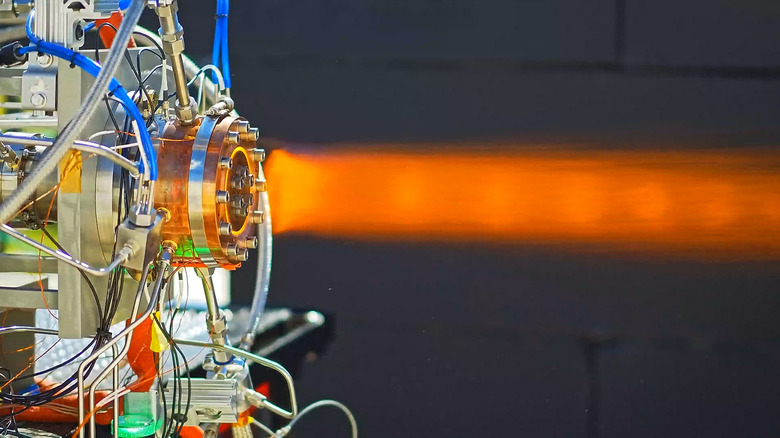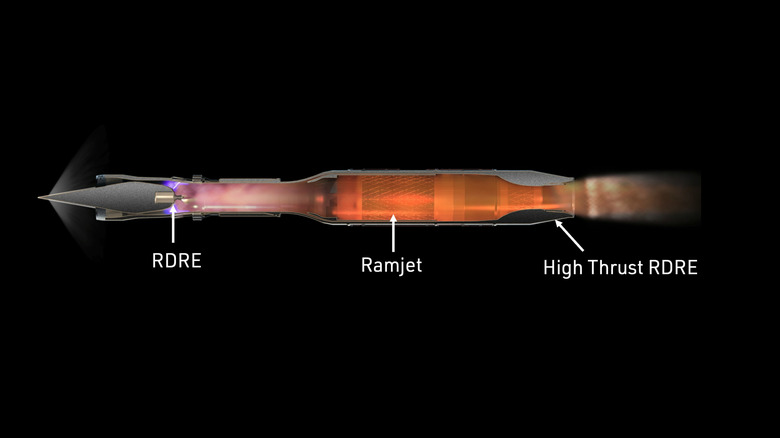This Jet Engine Can Reach Hypersonic Speeds Right Off The Runway
The race to bring hypersonic flight into the real world just took a leap forward with Venus Aerospace's successful test of a revolutionary engine. The Houston-based startup has developed a compact propulsion system that can hit hypersonic speeds, Mach 5 and above, straight off the runway, with no need for booster rockets. The Rotating Detonation Rocket Engine (RDRE), which produces powerful thrust more effectively than even the most expensive jet engines by using quick, controlled detonations, is at the heart of this innovation.
Venus Aerospace recently conducted the first full-scale test of its RDRE in the United States at Spaceport America in New Mexico, generating incredible levels of thrust and efficiency while exhibiting stable detonation under hypersonic-capable conditions. This is a unique accomplishment that could lead to a change in the powering of aircraft in the future. The company believes that this breakthrough demonstrates the feasibility of its propulsion architecture, which may result in high-speed aircraft that can access space from your everyday runway.
What separates RDREs from standard jet engines is that they ignite fuel by detonation rather than slower combustion. This results in supersonic shockwaves catapulting through the combustion chamber. As a result, energy transfer becomes much quicker and more effective and enables small, strong engines that are perfect for advanced aerospace applications. Venus believes this advancement could pave the way for commercial hypersonic planes that operate more like airliners than rockets, and the official press release positions the technology as a game-changer in both defense and civilian aviation.
How it works and why its revolutionary
The RDRE engine from Venus Aerospace isn't just faster; it changes the way propulsion works at its most basic level. Instead of burning fuel steadily, it detonates it in a circular chamber, sending shockwaves that keep the combustion going at supersonic speeds. These explosions are faster and use less energy than traditional burning methods. This means that the engine can make more thrust while using less fuel, which are important factors when it comes to the science of supersonic flights.
The company's ground test engine showed that this technology can be used on a larger scale. The engine ran with stable detonation in conditions replicating high-speed atmospheric flight. RDRE designs have long been explored by research institutions, including NASA and the Air Force, but Venus Aerospace is among the first to bring a working, flight-scaled prototype to life. The company's next goal is to integrate this RDRE into a detonation-based ramjet — a hybrid system called the V2RD — which could seamlessly transition from takeoff to hypersonic cruise with ultimate efficiency.
The fact that this device has a small footprint and can be reused is what makes it so revolutionary. Venus's propulsion system is designed for flight from regular airports, unlike traditional rocket engines, which come with a whole set of prerequisites. That opens up a lot of options for both military and civilian use.
Hypersonic flight may be closer than you think
Venus Aerospace envisions a future where a hypersonic spaceplane can take off from a runway, reach the edge of space, and fly at Mach 4 from London to Tokyo in under two hours. The company has only recently revealed designs of its Venus Stargazer M4 hypersonic plane that will utilize the same propulsion system. By eliminating the need for launch towers and multi-stage rockets, Venus is aiming for a reusable platform that looks more like a supersonic jet than a spacecraft.
Venus's unique approach of using explosions sets it apart from other companies that are also trying to turn hypersonic travel into reality. Its RDRE-Ramjet mix promises to be fast and easy to use in several different applications, from military missions to quick business trips, as it can take off from regular runways.
Of course, challenges remain around how hypersonic flight works in a commercial sense. Heat resistance, aircraft stability at Mach 5+, and international aviation regulations are major hurdles. But Venus is now among a select group of companies to successfully demonstrate hypersonic propulsion hardware in real-world tests. If this technology performs in-flight as it has on the ground, the future of global travel could look a lot faster — and take off from a tarmac near you.


